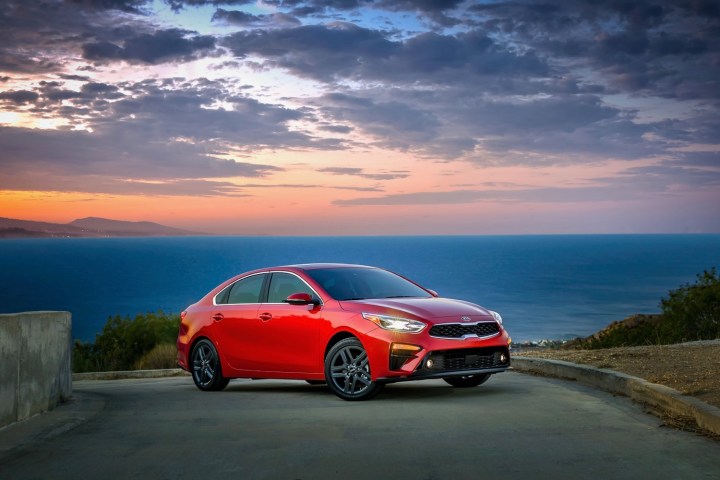
The previous two generations of Forte did a good job erasing bad memories of the old Sephia and Spectra, and this new third-generation model aims to take things even further upscale. Debuting at the 2018 Detroit Auto Show, the 2019 Forte features spiffy new exterior styling, more standard tech, and a powertrain that will be more fuel efficient than ever, according to Kia.
Kia definitely pulled out all of the stops when it came to styling. The 2019 Forte sports a low, curved roof, streamlined headlights and taillights, and fake vents at all corners of the body. Despite the curved roof, Kia claims overall height has increased by about 0.5 inch, freeing up headroom. The new Forte is also 3.2 inches longer and 0.7 inches wider than the previous-generation model. The new car stands out a bit more than its somewhat anonymous predecessor, but may be a tad overstayed nonetheless. Kia is only showing a four-door sedan for now, but the five-door hatchback may return as well. Don’t expect a new version of the old Forte Koup two-door, though.

Kia claims its engineers waited before developing a CVT so they could “research issues often associated with CVTs and apply their findings in the application used in the Forte.” Commonly-cited issues with CVTs include a lag in acceleration known as “rubber banding,” and noises almost as irritating as listening to automotive journalists complain about rubber banding. Kia claims to have addressed these issues with its IVT, but we’ll have to get behind the wheel of a 2019 Forte to find out definitively. We’ll also have to wait for official EPA fuel-economy ratings to see if Kia’s claim of 35 mpg combined proves true.
The 2019 Forte comes standard with an 8.0-inch touchscreen display, and Apple CarPlay and Android Auto compatibility. Wireless phone charging and a 320-watt Harman Kardon audio system are available as options. Kia will also offer various driver-assist features, including: adaptive cruise control, lane keep assist, forward collision avoidance assist, and blind spot monitoring.
The 2019 Kia Forte goes on sale later this year. Pricing will be announced closer to the launch date.
Editors' Recommendations
- Volkswagen’s celebrated Golf GTI returns with more power and new tech
- Pint-sized 2021 Kia Seltos crossover could be a great tech value
- Audi’s stylish RS 7 Sportback returns with more tech, space, and power


